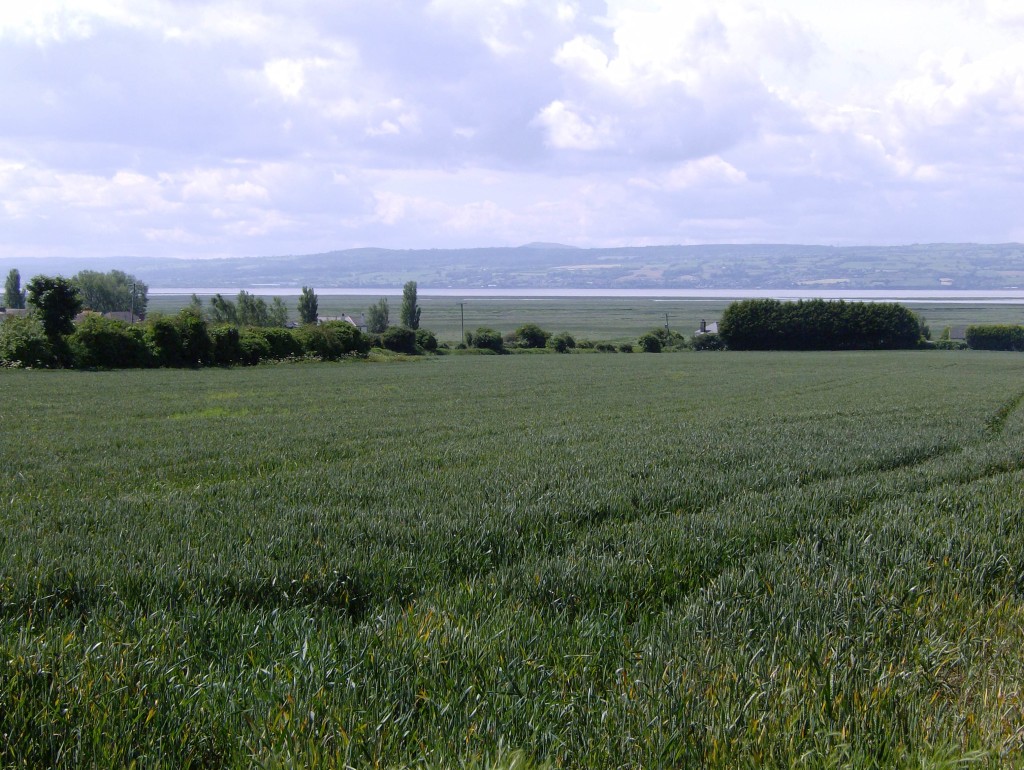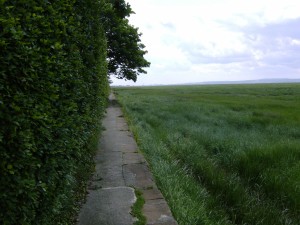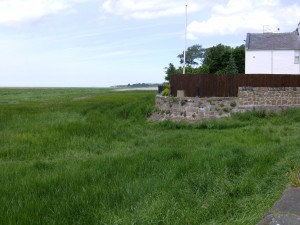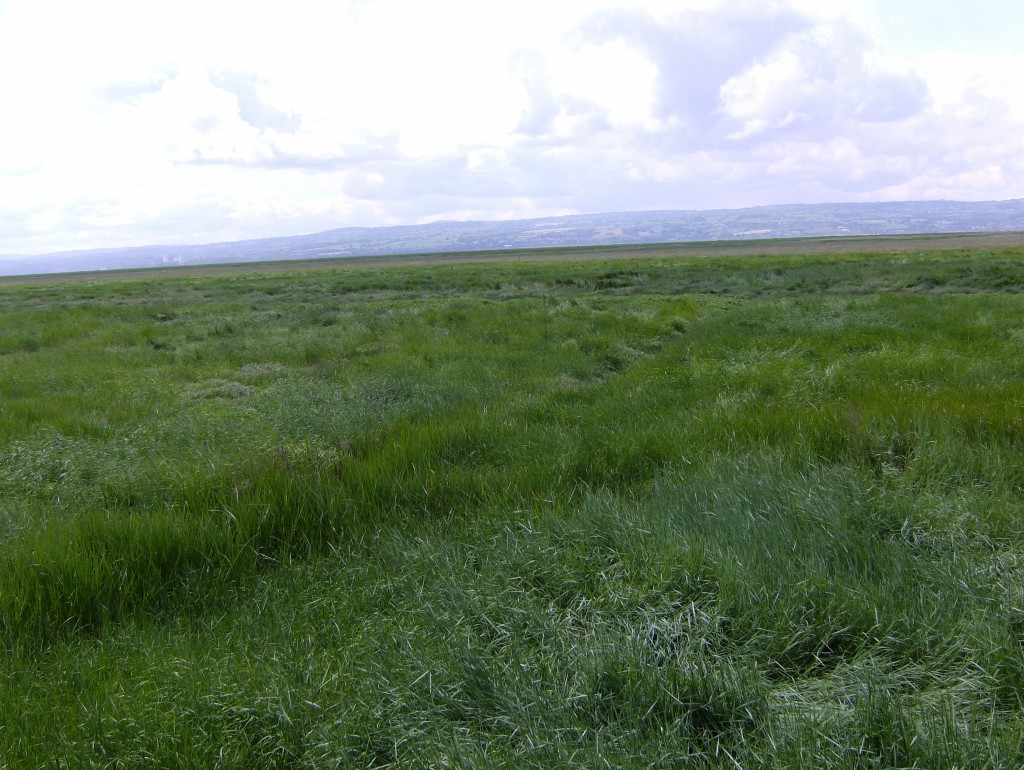Walking along the foreshore of the Dee estuary near Parkgate, enjoying the silence and the wide vista of land and sky, I was put in mind of the old poem by Charles Kingsley, The Sands of Dee. Kingsley was Canon of Chester Cathedral at the time and, wandering through the area in his spare time and talking to locals, he had heard tales of a young woman called Mary who had been lost on the Dee marshes some time before.
At the time the local farmers grazed their cattle along the marshland edges of the estuary. Mary was sent out to bring her father’s cattle home. She didn’t go straight away, which caused her father to become angry and he sent her on her way with shouts and curses.
But the afternoon was sunny and Mary quickly forgot her father’s harsh words and took a meandering path across the meadow and along the edge of the marsh enjoying the day. A mist crept across the marshes at dusk and she became disorientated. Mary followed the sound of the cattle further and further out onto the marsh, not wanting to abandon the creatures to the rising water of the incoming tide. Still trying to find the cattle, Mary eventually stumbled into the swollen channel of the river and was drowned.
Her body was recovered the next day by fishermen who at first mistook her halo of long hair for floating river weed. Legend has it that, on misty evenings, one can still hear Mary’s voice out on the marshes calling to her father’s cattle, and the cattle lowing despondently in response. The tale haunted Kingsley’s dreams and, in an attempt at catharsis, he penned his poem about her.
The sands of the Dee, the treacherous sands of the Dee, they haunt my dreams and cause me not to sleep. Mary, poor child, all alone with a westerly wind blowing and the tide rising relentlessly. Steadily it flows inwards, filling channels and flooding the lower banks. But still she strides on, clogs in one hand and skirts hitched up to her hips and held by the other. She calls to the cattle, stops and scans the marshes to the west with screwed up eyes, and then calls again.
She had tarried too long before setting out, immersed herself too deeply in her daydreams. Father found her and was angry. And now she plunges on frantically, seeking the cattle to bring them ashore before the rising tide can do its worst. In the farm yard he swings his axe furiously, slicing and splitting each proffered log whilst, in his heart, he silently regrets his harsh words.
Warm and safe in the cathedral cloisters, Kingsley sits on a bench and enjoys the Sun’s radiant blessing. He closes his eyes to struggle once more with the words of his composition. Immediately he feels again the biting wind at his face and the cold water lapping at his knees.
“O Mary, go and call the cattle home,
And call the cattle home,
And call the cattle home
Across the sands of Dee”;
The western wind was wild and dank with foam,
And all alone went she.
Wisps of sea mist begin to flicker across the water, gathering and thickening even as she watches them, struggling to see beyond their haze. She is cold; her legs are numb and her body is shivering uncontrollably. It occurs to her she can feel a spreading warmth then realises that she is peeing herself, but cannot stop.
The western tide crept up along the sand,
And o’er and o’er the sand,
And round and round the sand,
As far as eye could see.
The rolling mist came down and hid the land:
And never home came she.
The cattle are so close, she hears them lowing mournfully; can almost hear their snuffling breath. But where? In which direction? She can see neither cattle nor land now. She calls out to the creatures, but the only word that comes out of her mouth, again and again, is: ‘Daddy!’
Kingsley opens his eyes and sighs deeply, staring at his shoes as he composes himself. The fishermen he spoke to were adamant in their telling of the tale, even before he had bought them their fill of ale.
“Oh! is it weed, or fish, or floating hair–
A tress of golden hair,
A drownèd maiden’s hair
Above the nets at sea?
Was never salmon yet that shone so fair
Among the stakes on Dee.”They rowed her in across the rolling foam,
The cruel crawling foam,
The cruel hungry foam,
To her grave beside the sea:
But still the boatmen hear her call the cattle home
Across the sands of Dee.
He drew on his pipe and nodded as he listened:
‘We swear, Canon, we swear it’s true. We’ve all heard her. Her restless soul was out there that night and, God bless her, she’s out there still.’





Bobby,
That’s the sound of selkies they hear when they venture onto the marsh. And you know what happens when mortals hear selkies…
There has long been a legend that a family that live near Burton Marsh, just south of Parkgate know the way to cross the marsh over to the Wales side of the Dee from Burton (and its not using the brand new cycleway which has led many to lament the loss of the old trespass route through the firing ranges). They have passed this secret from generation to generation. Mary’s sheep will have feasted on the samphire which proliferates on the marsh; Burton Marsh lamb has a tantalising flavour I’m told.
When the tide comes in on the marsh it races into the myriad gullies so its not surprising that Mary foundered. It’s all a bit too thixotropic out there for my linking!
It’s a strange place – I never venture beyond the shoreline. A friend once claimed to know someone who regularly crossed the estuary at low tide, had a pint in Wales and then returned back across. Which is probably about as reliable a source of information as: ‘a bloke in the pub said…’!
I very much enjoyed this and again it reminded me so much of my childhood in that area. However, I hadn’t heard of the poem – so thanks.
Thanks Christine – I’ve just learned the word ‘pleaching’ from your blog.
Thanks for this from me, too. I lived at Bagillt, near Flint, for a while, and loved the view from my window across the estuary towards the Wirral. It is a particularly eerie, unsettling but strangely beautiful zone. Liked the reference to selkies in the comment above (aren’t they NE/Scots?). And a new word on me: ‘thixotropic’. Must smuggle that in to conversation in future. The poem was new to me too: thanks. Put me in mind of some of the legends of Dartmoor (and Conan Doyle’s recycling of them).
Bagillt! Some interesting walks along the estuary in both directions from there. Unfortunately, the village is suffering with the post-industrial blues these days. Did you see the link provided by Plethi Project? Some fascinating background on The Sands of Dee which I didn’t know about until after I wrote my piece: http://www.liminoids.com/2012%20Roberts_TheSandsofDee.pdf
Fascinating and seductive mix of landscape and story. Also learning from Plethi Project’s link that Michael Powell was due to shoot a video with New Order based on the poem – Wow. (Also as an aside Bobby, it doesn’t appear that people can ‘like’ your posts without a Facebook login).
Not quite a case of me channelling Charles Kingsley’s words but, under the influence of a very eerie landscape, I found myself imagining his thoughts as he wrote the poem. Oh, and thanks for clearing up the reason why so few people ‘like’ me!
Hi, just to say that this reminded me of my childhood learning this poem at infant school. I was born and brought up in Parkgate and spent many happy hours gully hopping on the dee and walking the shoreline dotted with sheep. It can be a beautiful and also a haunting place to be. Dad would send us out to pick samfire which mum would steam for our tea to go with brown shrimps caught on the Dee and home made bread. Wonderful memories.
Lovely anecdote, thanks Pam. I think ‘beautiful’ and ‘haunting’ are two very appropriate words for this part of the estuary.
My grandmother kept the pub (The Greyhound) in Shotwick on Dee side until 1914.My mother, who was born in the pub, remembers drinkers walking over from the Welsh side and reckoned that was the reason they had to give up the pub because of the rowdy behaviour!!
I learned this poem at school and loved it and, as a writer myself, it was refreshing to read it again and enjoy all the comments.
“The Sands of Dee”, inspired me many times to write about the sand and water, and gave me a new appreciation of God’s wonderful world!
Thank you Vera, much appreciated.
Great to read all the comments, especially from people who know the area. If it’s all right I’d like to use the info. about samphire plus one or two other points in a book of poem discussions with a centenarian (please look here if you’re interested: http://finelinepress.co.nz/thelma.html ). Graham Bathgate, Paraparaumu, NZ
Hi Graham – great to hear from you and thanks for your comments. I don’t have copyright of the essay I think you mean (the one with the link in the comments section) but I don’t see any problem with using it in the context which you describe, provided you give acknowledgement to the author. I look forward to reading the discussion with Thelma!
“Mary eventually stumbled into the swollen channel of the river and was drowned”
How do we know this? The poem clearly indicates that Mary was drowned due to the incoming tide. The incoming tide on the flat Dee estuary comes in at a very high speed from the Irish Sea.
What is unclear from the poem is whether or not the cattle got back safely home on their own or whether they were also drowned. If the latter, then as well as being a terrible personal tragedy, it would have been an economic disaster for the family. Presumably, since the poem does not mention the fisherman finding cattle floating in the water, the cattle instinctively knew which was the right way to the shoreline despite the mist.
A question concerning those who claim that a route across the river is possible — what is the depth and width of the river at low tide in the estuary during the summer when the least water is flowing down stream? Even as recently as June 2009, a seven year old boy drowned while swimming in not very deep water somewhere in the Connah’s Quay area due to the strong current (downstream flow of water).
Lovely, lovely writeup!
Thank you!
In the nineteenth century and earlier the Dee estuary not just at Parkgate but much further westwards was used for grazing cattle. The area is now called the West Hoyle sandbank and is notorious for drownings and shipwrecks – as Charles Kingsley would have well known. There has been at least one causeway across the Dee from the Welsh side to the sandbank and perhaps all the way to the other side; this was build of stone, started near Prestatyn and was called Pont yr Hylas (Hylas’s Bridge). This causeway was still visible around 1900 at exceptionally low tides but has now vanished. A thousand years ago the shoreline was around two miles further out, and the River Dee and other rivers such Prestatyn Gutter were navigable rivers set within countryside. The repeated flooding of the countryside by the rivers created very fertile grazing lands; these were needed on the Welsh side in particular because the the land bordering the Dee estuary is quite a narrow strip with hills immediately behind.
Thanks for that information, Max. I find the history of the Dee estuary endlessly fascinating.
My daughter is a competition dancer and her “character” solo is based on this beautiful poem. We live on the Wirral peninsula, although the opposite end from Parkgate, but have eaten many an ice cream walking along the seawall there.
I think the Wirral is a fascinating place and, as you say, great ice cream at Parkgate!
It seems that Kingsley heard of the death in a report in the Chester Chronicle. The drowned girl was Mary Eccles, wife of the keeper of Hilbre Island and she had got caught in the tide when going for cattle.
As for Mary Eccles, she was my maternal grandfather’s great-grandmother. One local story is that her ghost still haunts the island
Thanks Ian, that’s great background. Interestingly, I get lots of clicks on this piece from India and Bangladesh – the poem is clearly on the curriculum of one or more schools or universities on the sub-continent.